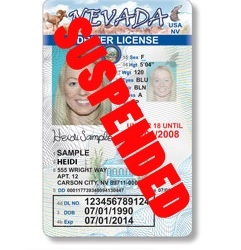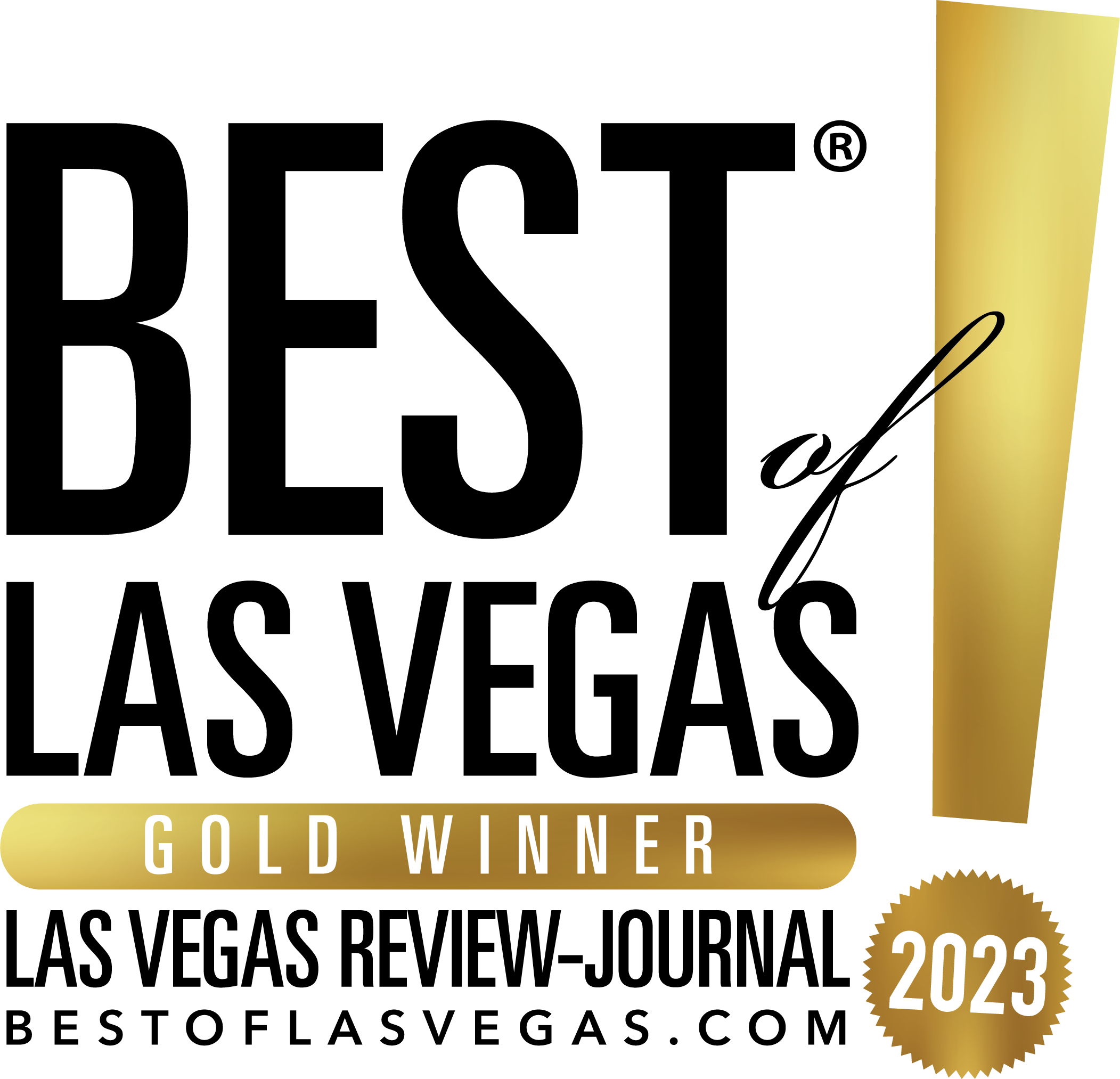In this section, our attorneys explain Nevada’s criminal laws and legal concepts, A to Z
Please note: Our firm only handles criminal and DUI cases, and only in California. We do not handle any of the following cases:
- civil matters
- CCWs or gun right restoration
- labor
- family law
- immigration
- landlord/tenant
- harassment
- restraining orders
And we do not handle any cases outside of California.
Call Us NowCan Nevada suspend my driver’s license for an accident?
Posted on

In Nevada, getting into a car accident will not by itself trigger a driver’s license suspension. However, the DMV will suspend your license if there are certain “aggravating circumstances” surrounding the crash.
For example, many collisions result from driving under the influence of alcohol or drugs. A first-time DUI with no serious injuries carries a 185-day license suspension in Nevada (though you can usually continue driving with an ignition interlock device, abbreviated “IID”).1
Another common cause of crashes are traffic infractions (such as speeding), each of which adds a certain number of demerit points to your driving record for one year. If your crash causes you to reach 12 demerit points, the DMV will revoke your license for six months.2
The table below lists all the circumstances that will result in your Nevada driver’s license being revoked following a car accident:
|
Aggravating circumstance |
Length of driver’s license suspension in Nevada |
| You do not have automobile insurance (or you carry less than the 25/50/20 mandatory minimum in Nevada) | Until you secure SR22 insurance (proof of financial responsibility), which you then need to maintain for 3 years |
| You accrue 12 or more demerit points in a 12-month period | 6 months (though you can apply for a restricted license after 3 months) |
| First DUI in seven years | 185 days (though you may be able to continue driving with an IID) |
| Reckless driving causing you to collide with a pedestrian or cyclist | 6 months to 2 years |
| Unauthorized drag racing | 6 months to 2 years |
| Trick driving | 6 months to 2 years |
| For the second time in three years, you accrue 12 or more demerit points in a 12-month period | 1 year (though you can apply for a restricted license after 6 months) |
| For the third time in five years, you accrue 12 or more demerit points in a 12-month period | 1 year (you cannot get a restricted license) |
| Willfully failing to file an accident report with the DMV within 10 days of crash if it caused bodily injury, death, or $750 or more in property damage (and no police were on scene) | 1 year or until report is received
(In the case of this aggravating circumstance, the DMV may suspend your license – it does not have to.) |
| Felony hit and run (failing to render aid after a crash that caused death or substantial bodily harm) | 1 year |
| Second DUI in seven years | 1 year (though you may be able to continue driving with an IID) |
| Third reckless driving in 12 months | 1 year |
| Any manslaughter resulting from driving (including vehicular manslaughter) | 1 year |
| Willfully ignoring a peace officer’s signal to stop | 1 year |
| Reckless driving causing substantial bodily harm or death | 3 years |
Felony DUI, which comprises:
|
3 years (though you may be able to continue driving with an IID) |
| Failing to pay a judgment after being found liable for a car crash | Until the judgment is paid and you secure SR22 insurance |
| Having a medical condition that makes it unsafe to drive (such as blindness, severe epilepsy, etc.) | Until if and when the medical condition resolves |
Fighting a license suspension
In order to contest your license being suspended, you can request an “administrative hearing” with the Nevada DMV. You have the opportunity to present evidence and witnesses, and the hearing officer presiding over the proceeding makes the final decision.
Administrative hearings can be difficult to win because the state has a very low burden of proof, and your license can be suspended based on very little evidence. In my experience, you will have a greater chance of success if you have an experienced attorney representing you.
Restricted licenses
In Nevada, you may be eligible to drive on a restricted license once half of your suspension period has passed. Restricted licenses (also called hardship licenses) permit you to drive only to certain designated locations such as work, school, or doctor’s appointments.
Click here for the Nevada DMV Restricted License application.
Note that there are no restricted licenses in DUI cases. Instead, you may be able to continue driving to any location as long as you have an IID in your car.
Reinstating your license
Reinstating a revoked driver’s license in Nevada requires you to:
- complete a Nevada DMV driver’s license application;
- pay a reinstatement fee ($120 in DUI cases, $75 in other cases); and
- fulfill any other DMV requirements specific to your case, which could include written testing and getting SR-22 insurance.
Learn more in our article, How do I reinstate a revoked license in Nevada?
If you live out of state
Your home state DMV will likely suspend your license for the same amount of time that the Nevada DMV would if you were a resident. Contact a local attorney in your state for more information.
Driving on a suspended license
Driving on a license that has been suspended or revoked is a misdemeanor in Nevada. If the reason for the suspension was DUI, you face an additional one-year suspension plus:
- 30 days in jail (or 60 days of home confinement) to 6 months in jail; and
- $500 to $1,000 in fines.
In all other cases, you face a doubling of your original license suspension plus:
- Up to $1,000 in fines; and/or
- Up to 6 months of jail time.3
Note that driving without a license at all is also a misdemeanor carrying penalties of:
- Up to $1,000 in fines; and/or
- Up to 6 months of jail time.4

A car crash should not trigger a license suspension unless there is an aggravating factor.
Additional resources
For more information, refer to the following by the Nevada Department of Motor Vehicles.
- Nevada Driver Handbook – Booklet of Nevada driving and license laws.
- Office of Administrative Hearings – The department that handles the hearings where you can contest your license suspension.
- License Reinstatement – Instructions on how to get your license back following a period of revocation/suspension.
- Driver History Reports – Information on what your driving records show and how to get a copy.
- Forms – Links to forms relating to licenses and registration.
Legal References
- NRS 483.460. See, for example, State v. Terracin (2009) 125 Nev. 31.
- NAC 483.510.
- NRS 483.560. See, for example, Zamarripa v. First Judicial Dist. Court (Nev. 1987) P.2d 1386;
- NRS 483.230.
About the Author

Neil Shouse
A former Los Angeles prosecutor, attorney Neil Shouse graduated with honors from UC Berkeley and Harvard Law School (and completed additional graduate studies at MIT). He has been featured on CNN, Good Morning America, Dr Phil, The Today Show and Court TV. Mr Shouse has been recognized by the National Trial Lawyers as one of the Top 100 Criminal and Top 100 Civil Attorneys.

